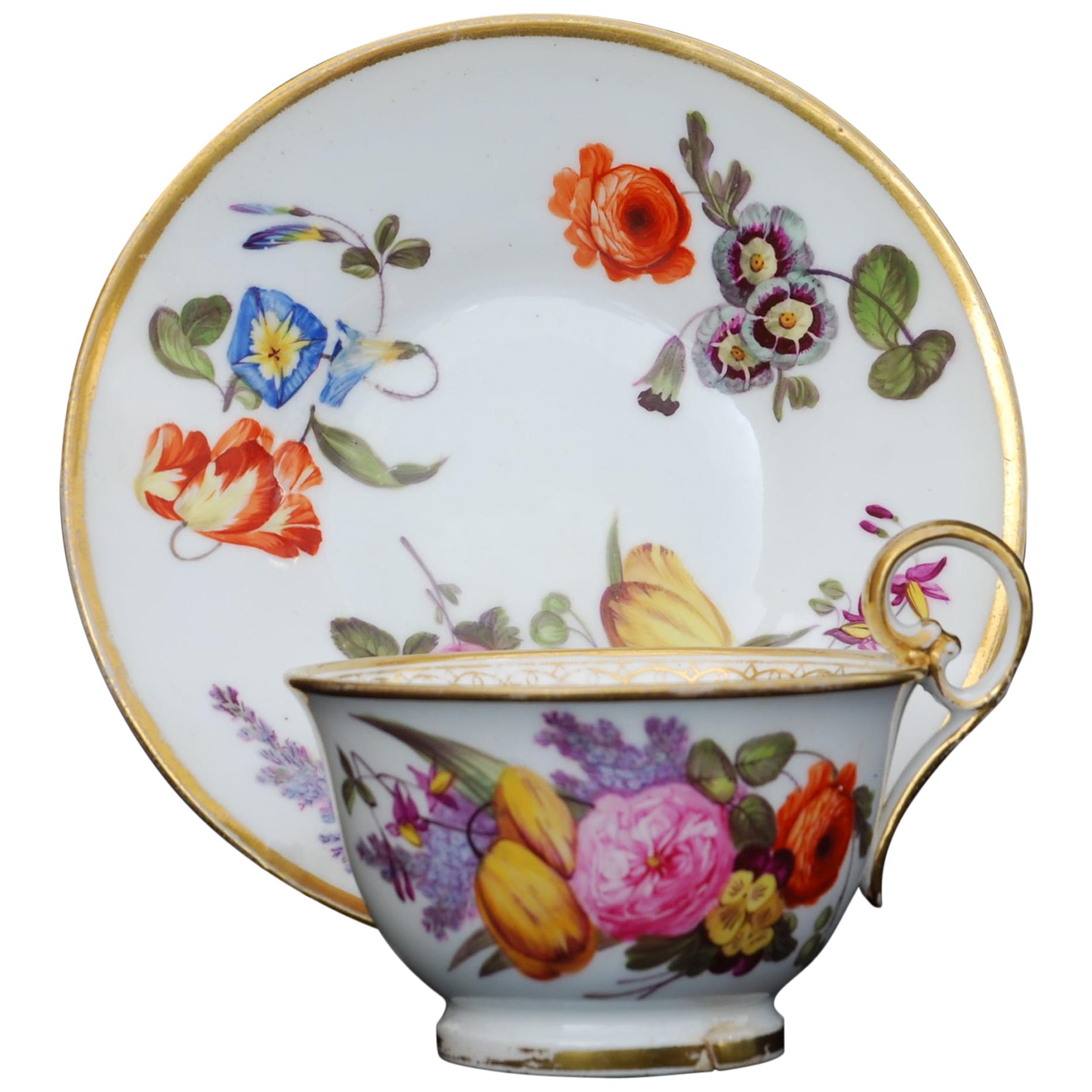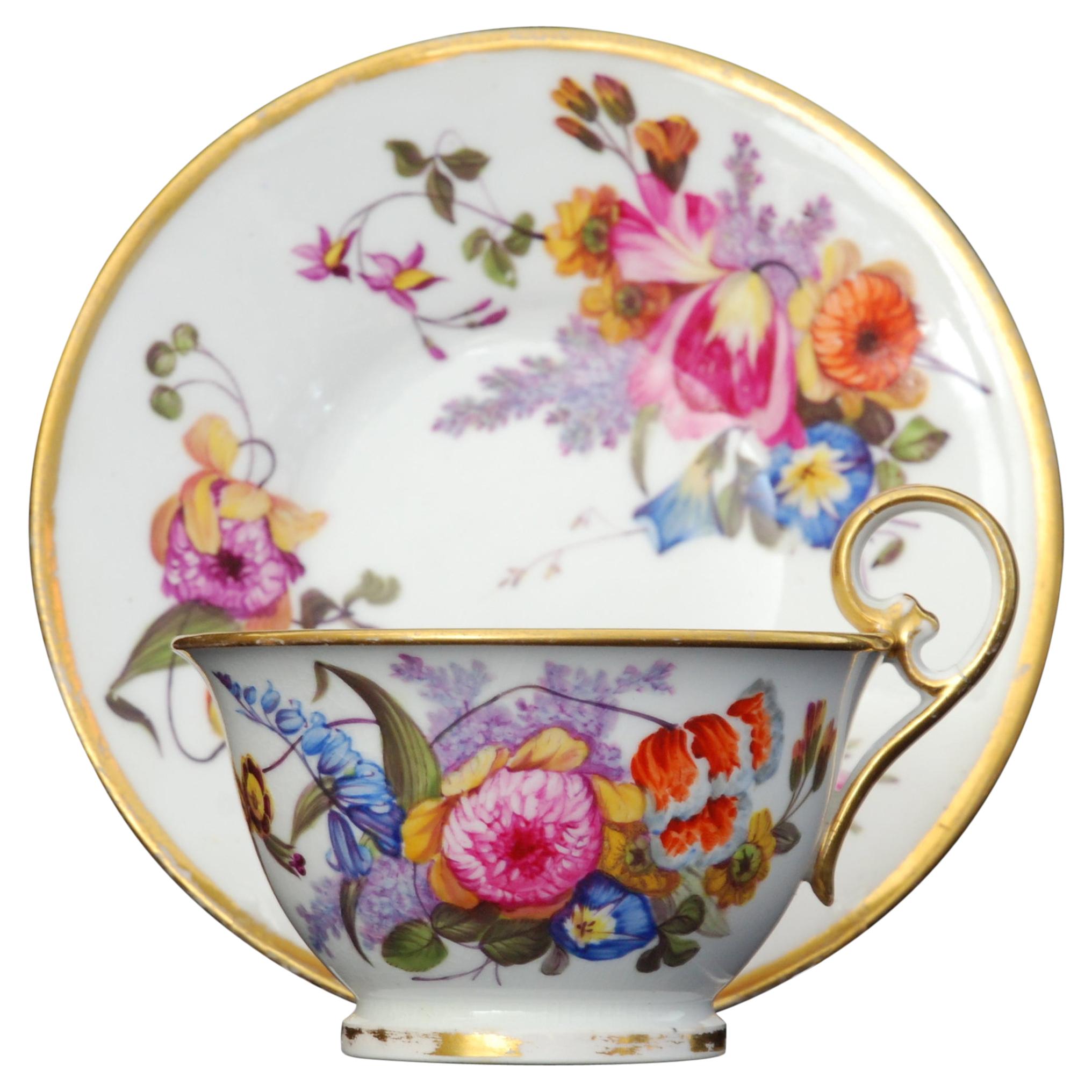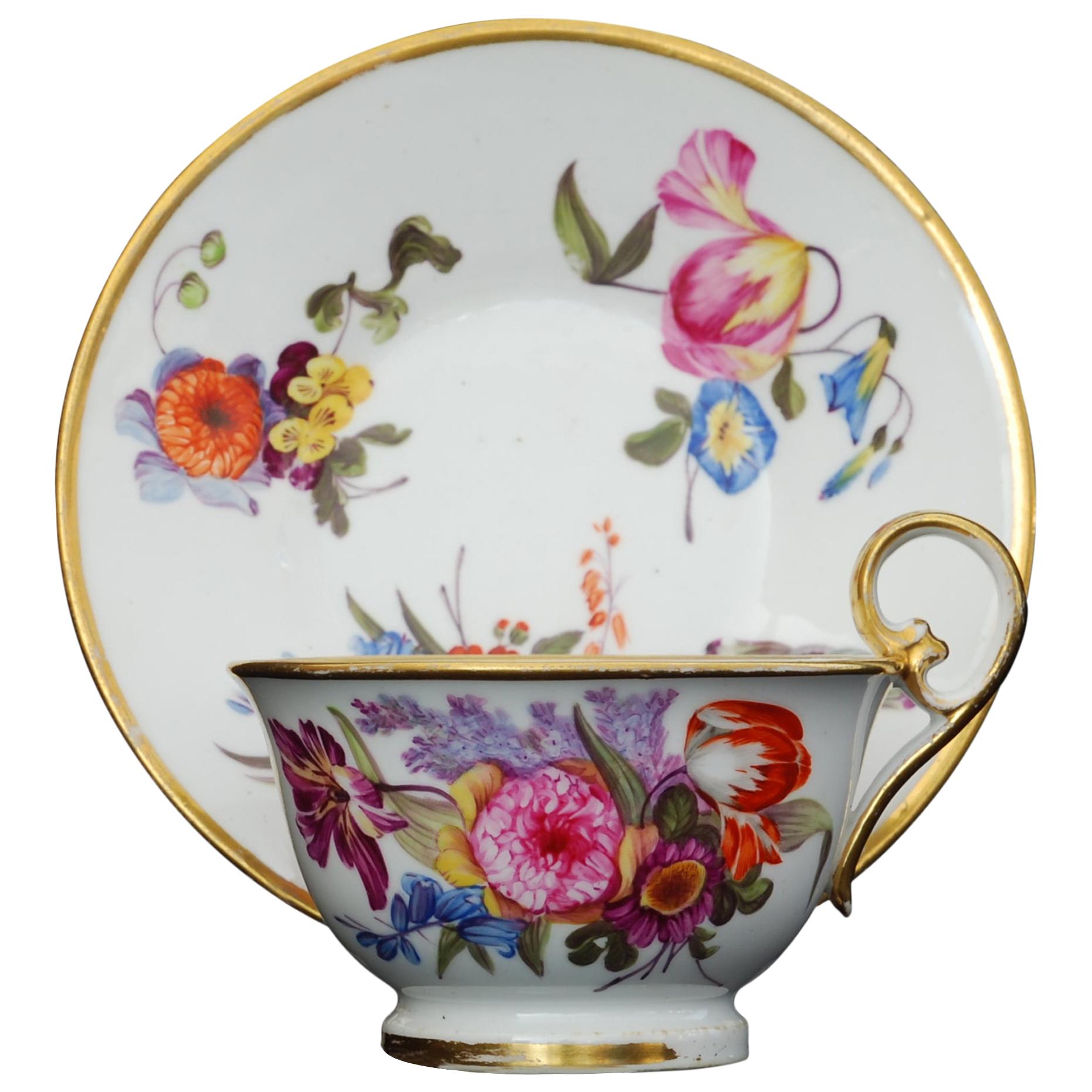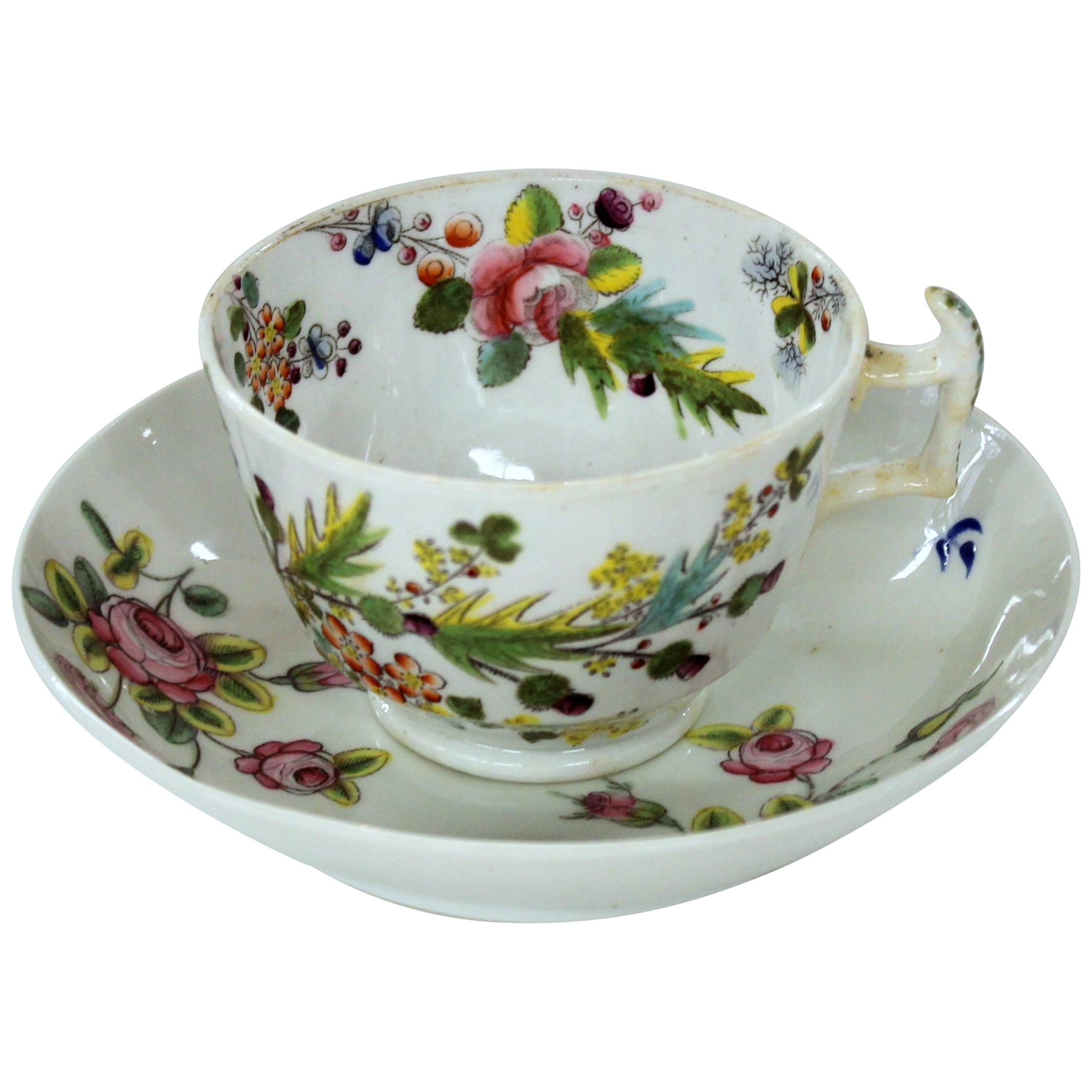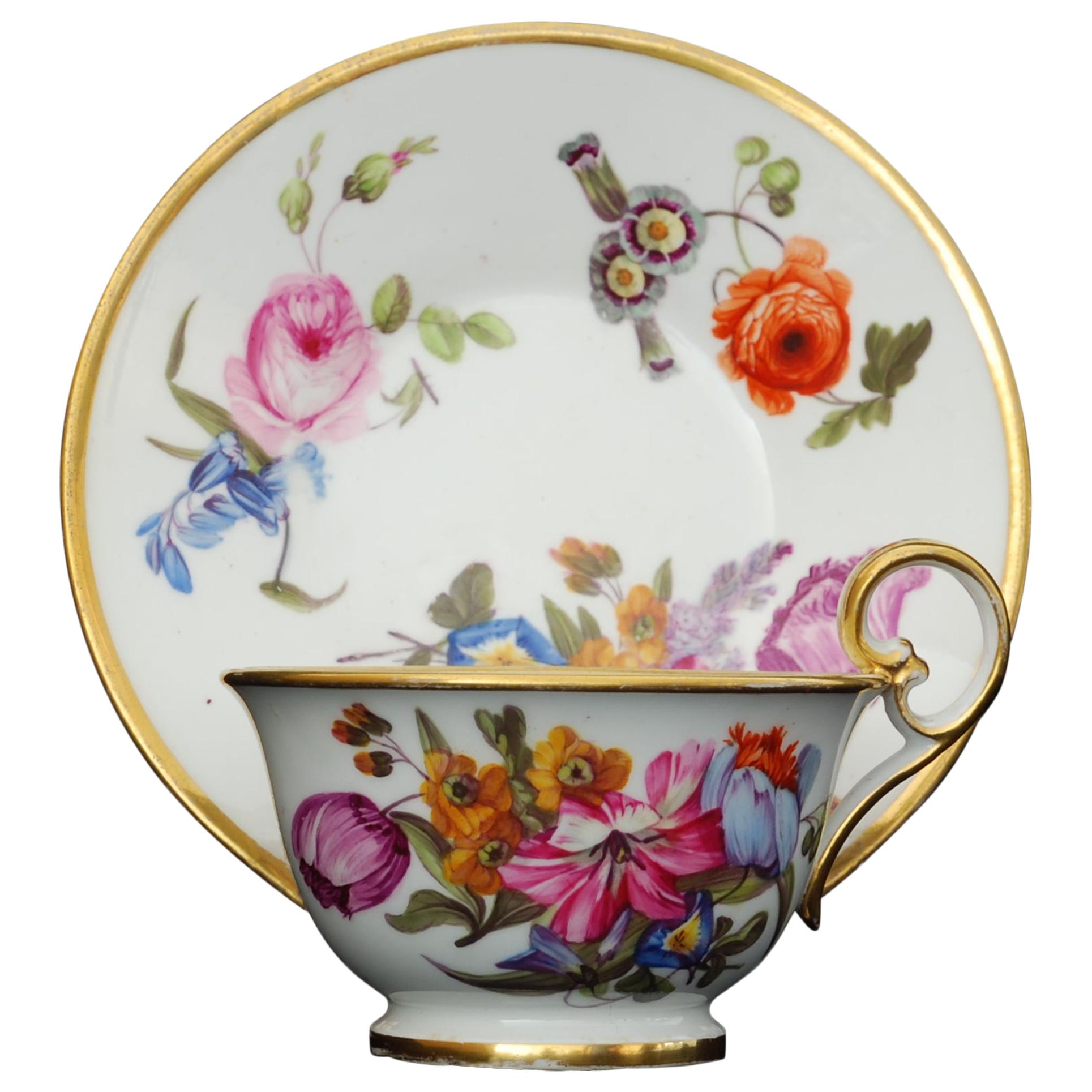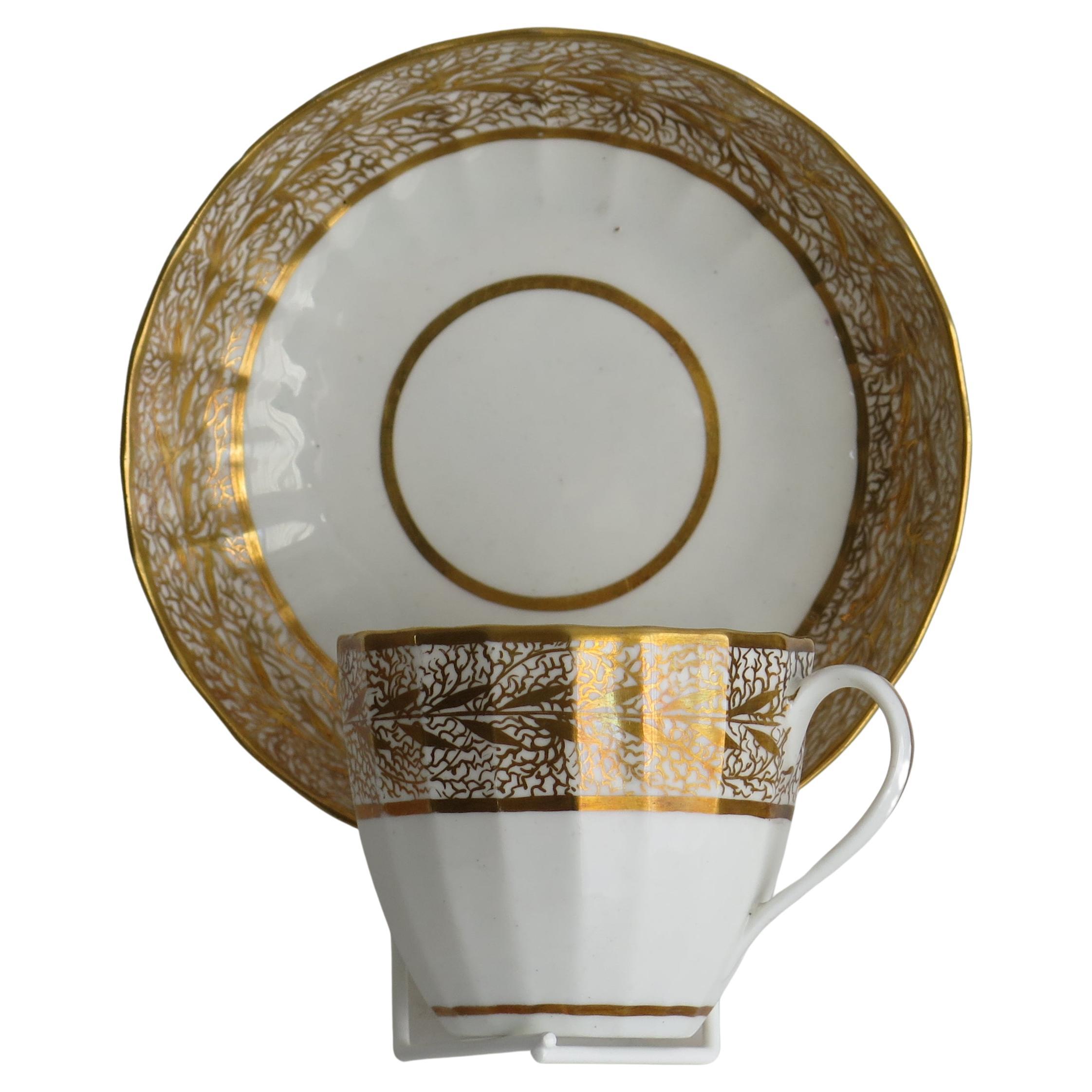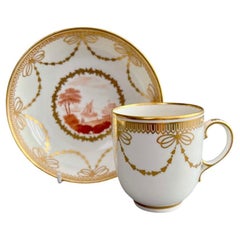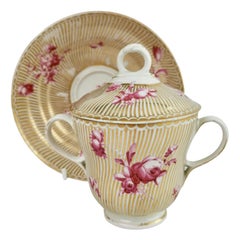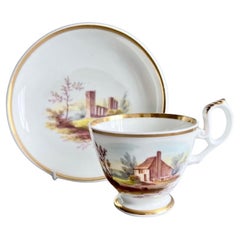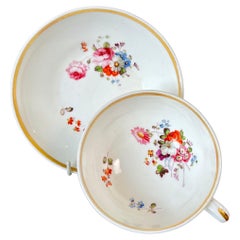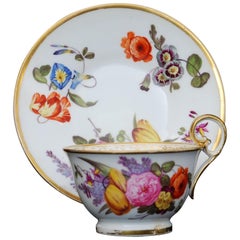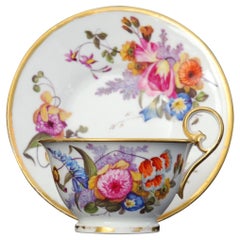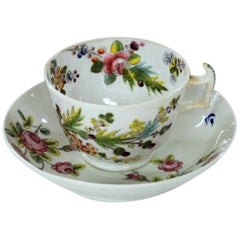Items Similar to New Hall Hybrid Hard Paste Teacup, Palm Tree patt. 484, Georgian ca 1810
Want more images or videos?
Request additional images or videos from the seller
1 of 16
New Hall Hybrid Hard Paste Teacup, Palm Tree patt. 484, Georgian ca 1810
$372per set
$465per set20% Off
£279.71per set
£349.64per set20% Off
€324.82per set
€406.02per set20% Off
CA$519.49per set
CA$649.36per set20% Off
A$576.15per set
A$720.19per set20% Off
CHF 302.57per set
CHF 378.21per set20% Off
MX$7,075.57per set
MX$8,844.46per set20% Off
NOK 3,830.22per set
NOK 4,787.77per set20% Off
SEK 3,611.94per set
SEK 4,514.93per set20% Off
DKK 2,423.48per set
DKK 3,029.35per set20% Off
Shipping
Retrieving quote...The 1stDibs Promise:
Authenticity Guarantee,
Money-Back Guarantee,
24-Hour Cancellation
About the Item
This is a beautiful teacup and saucer made by New Hall around the year 1810. The set is decorated in the very desired but rare palm tree pattern with the number 484.
We also have a full tea service in this pattern available, please see separate listing. This cup originally formed part of that service, which was depicted in plate 188 in Geoffrey A. Godden's book "New Hall Porcelains".
The New Hall factory started as a cooperative of several Staffordshire potters making use of the porcelain license of Bristol Porcelain Company after this went in demise. It quickly grew out to be a leading porcelain maker, and the first to make true porcelain in Staffordshire. New Hall is mostly known for its huge output of its typical "hybrid hard paste" porcelain, as New Hall had adapted the original hard paste recipe from Bristol in order to save on production costs - a frugal Staffordshire improvement on the first hard paste porcelain recipes, which were quite difficult and expensive to produce. Once Josiah Spode had standardised bone china this quickly became the standard. New Hall was late to take up bone china but after 1814 they made it their main output, and they made some very high quality items.
This set is made in this typical "hybrid hard paste" porcelain, as New Hall had adapted the original hard paste recipe from Bristol (formerly Plymouth), but adapted it slightly in order to save on production costs. You can tell this by the way the porcelain is less milky than bone china. As this hybrid porcelain was slightly cheaper to make and very popular among customers who were used to the more stony Chinese Export porcelain, New Hall was a late adapter of bone china, which was already used by most other factories around the time this set was made.
The set is decorated with a gorgeous and very charming pattern called the palm tree pattern. The only two colours used are underglaze blue and and overglaze rust red, and gilt. It is a charming pattern of palm trees and lush flowers.
The set is unmarked, which is common for items of this era.
The service that this teacup formed a part of is depicted in plate 188 in Geoffrey A. Godden's book "New Hall Porcelains"; it is credited to Mssrs Sotheby's, and I have included the corresponding label of Sotheby's, where it was sold on 7 March 1989. It most probably came into the ownership of Geoffrey A. Godden, and was later purchased from the collection of Frank Herrmann.
CONDITION REPORT In excellent antique condition without any damage, repairs, or crazing and just some light rubbing as visible in the pictures.
Antique British porcelain is never perfect. Kilns were fired on coal in the 1800s, and this meant that china from that period can have some firing specks from flying particles. British makers were also known for their experimentation, and sometimes this resulted in technically imperfect results. Due to the shrinkage in the kiln, items can have small firing lines or develop crazing over time, which should not be seen as damage but as an imperfection of the maker's recipes, probably unknown at the time of making. Items have often been used for many years and can have normal signs of wear, and gilt can have signs of slight disintegration even if never handled. I will reflect any damage, repairs, obvious stress marks, crazing or heavy wear in the item description but some minor scratches, nicks, stains and gilt disintegration can be normal for vintage items and need to be taken into account.
There is widespread confusion on the internet about the difference between chips and nicks, or hairlines and cracks. I will reflect any damage as truthfully as I can, i.e. a nick is a tiny bit of damage smaller than 1mm and a chip is something you can easily see with the eye; a glazing line is a break in the glazing only; hairline is extremely tight and/or superficial and not picked up by the finger; and a crack is obvious both to the eye and the finger. Etcetera - I try to be as accurate as I can and please feel free to ask questions or request more detailed pictures!
DIMENSIONS teacup 8.2cm (3.25") diameter; saucer 14.2cm (5.5").
- Creator:New Hall (Maker)
- Dimensions:Height: 1 in (2.54 cm)Diameter: 1 in (2.54 cm)
- Sold As:Set of 2
- Style:Regency (Of the Period)
- Materials and Techniques:
- Place of Origin:
- Period:
- Date of Manufacture:circa 1810
- Condition:Wear consistent with age and use. In good condition without damage, repairs, or crazing and just some minimal wear as visible in the pictures.
- Seller Location:London, GB
- Reference Number:Seller: LT-NEW04a1stDibs: LU4805139168482
About the Seller
5.0
Gold Seller
Premium sellers maintaining a 4.3+ rating and 24-hour response times
Established in 2016
1stDibs seller since 2019
225 sales on 1stDibs
Typical response time: 2 hours
- ShippingRetrieving quote...Shipping from: London, United Kingdom
- Return Policy
Authenticity Guarantee
In the unlikely event there’s an issue with an item’s authenticity, contact us within 1 year for a full refund. DetailsMoney-Back Guarantee
If your item is not as described, is damaged in transit, or does not arrive, contact us within 7 days for a full refund. Details24-Hour Cancellation
You have a 24-hour grace period in which to reconsider your purchase, with no questions asked.Vetted Professional Sellers
Our world-class sellers must adhere to strict standards for service and quality, maintaining the integrity of our listings.Price-Match Guarantee
If you find that a seller listed the same item for a lower price elsewhere, we’ll match it.Trusted Global Delivery
Our best-in-class carrier network provides specialized shipping options worldwide, including custom delivery.More From This Seller
View AllDerby Coffee Cup, Monochrome Sepia Landscapes Zachariah Boreman, ca 1785
By Crown Derby, Derby
Located in London, GB
This is a very rare and stunning coffee cup and saucer made by Derby in about 1785. The set has a white ground with graceful gilding, and two stunning little landscapes painted by Za...
Category
Antique 1780s English Romantic Tea Sets
Materials
Porcelain
$1,912 Sale Price / set
20% Off
Free Shipping
Chelsea-Derby Chocolate Cup Set, Gilt Stripes, Puce Flowers, Rococo 1770-1775
By Chelsea-Derby, Chelsea Porcelain, Derby
Located in London, GB
This is a beautiful chocolate cup set made by Chelsea-Derby between 1770 and 1775, which was the Rococo era. The set consists of a cup, a saucer and a cover, and is decorated in a st...
Category
Antique 1770s English Rococo Tea Sets
Materials
Porcelain
$940 Sale Price / set
23% Off
Free Shipping
H&R Daniel Coffee Cup Duo, Plain Shape, White with Landscape, 1825-1830
By H&R Daniel
Located in London, GB
This is an extremely rare and beautiful coffee cup and saucer made by H&R Daniel some time between 1825 and 1830. The set is potted in the "plain" shape and bears pattern no. 4652 wi...
Category
Antique 1820s English Rococo Revival Tea Sets
Materials
Porcelain
$368 Sale Price / set
20% Off
Free Shipping
Samuel Alcock Porcelain Teacup, White with Flower Sprays, ca 1823
By Samuel Alcock & Co.
Located in London, GB
A teacup and saucer in the “half orange” shape, white with simple gilt rim and beautiful hand painted flower sprays
Pattern unknown but similar to 1082
Year: ca 1823
Size: cup diameter 10cm (4”), saucer diameter 14.2cm (5.5”)
Condition: excellent, some rubbing to gilt
There are several items available in this design, please see group image and ask for more info if interested.
The Samuel Alcock factory was operative in Staffordshire between 1822 and 1856, after which it was bought by Sir James Duke and Nephews. The factory started as a partnership between the young Samuel Alcock and the older Ralph Stevenson, who provided the factory and capital. Alcock quickly took the factory to great heights, building one of the biggest factories of its time. Alcock jumped on the new Rococo Revival fashion and served a huge new middle class market. The reason we now don't hear much about Samuel Alcock porcelain...
Category
Antique 1820s English Regency Tea Sets
Materials
Porcelain
$292 Sale Price / set
20% Off
Free Shipping
New Hall Porcelain Tea Service, Japanese Tobacco Pattern, Georgian, circa 1795
By New Hall
Located in London, GB
This is a stunning tea service made by New Hall in circa 1795. The service is made of hybrid hard paste porcelain and decorated in a bold Chinoiserie pattern of large flower sprays. The service consists of a teapot with cover, a milk jug, a slop bowl, and six tea bowls with saucers.
This service has provenance; it came from the collection of David Redstone, the well known porcelain expert who wrote leading books on Bow and Chelsea porcelain.
The New Hall factory started as a cooperative of several Staffordshire potters making use of the porcelain license of Bristol Porcelain...
Category
Antique 1790s English George III Tea Sets
Materials
Porcelain
$2,320 Sale Price / set
20% Off
Free Shipping
Samuel Alcock Teacup and Milk Jug, Pale Yellow, Gilt and Flowers, ca 1824
By Samuel Alcock & Co.
Located in London, GB
A teacup and saucer with milk jug in the “melted snow” shape with double drop handles, pale yellow ground with rich gilt and cobalt blue acanthus pattern and finely painted flower re...
Category
Antique 1820s English Regency Tea Sets
Materials
Porcelain
$496 Sale Price / set
20% Off
Free Shipping
You May Also Like
Tea Cup and Saucer Nantgarw Porcelain, circa 1815
By Moses Webster, Nantgarw Pottery
Located in Melbourne, Victoria
A rare tea cup and saucer in Nantgarw’s superb soft-paste porcelain. Each piece is gilded and decorated in one of the London workshops with superb f...
Category
Antique 1810s Welsh Regency Porcelain
Materials
Porcelain
Tea Cup and Saucer Nantgarw Porcelain, circa 1815
By Nantgarw Pottery, Moses Webster
Located in Melbourne, Victoria
A rare tea cup and saucer in Nantgarw’s superb soft-paste porcelain. Each piece is gilded and decorated in one of the London workshops with superb flower ...
Category
Antique 1810s Welsh Regency Porcelain
Materials
Porcelain
Tea Cup and Saucer Nantgarw Porcelain, circa 1815
By Nantgarw Pottery, Moses Webster
Located in Melbourne, Victoria
A rare tea cup and saucer in Nantgarw’s superb soft-paste porcelain. Each piece is gilded and decorated in one of the London workshops with superb flower ...
Category
Antique 1810s Welsh Regency Porcelain
Materials
Porcelain
English Early 19th Century New Hall Porcelain Floral Decor Cup and Saucer
By New Hall
Located in CHARLESTON, SC
Rare and fine antique English new hall porcelain floral decor cup and saucer
Rare printed mark on saucer. Pristine condition. Colors are still vibrant.
Saucer: 5 1/2" D x 1 1/4" ...
Category
Antique Early 19th Century English George III Porcelain
Materials
Porcelain
Tea Cup and Saucer Nantgarw Porcelain, circa 1815
By Nantgarw Pottery, Moses Webster
Located in Melbourne, Victoria
A rare tea cup and saucer in Nantgarw’s superb soft-paste porcelain. Each piece is gilded and decorated in one of the London workshops with superb f...
Category
Antique 1810s Welsh Regency Porcelain
Materials
Porcelain
Georgian Derby Cup and Saucer Duo in Pattern 561, Puce Mark Circa 1800
By Derby
Located in Lincoln, Lincolnshire
This is a good porcelain duo of a cup and saucer by the Derby factory, made during the George 111rd period, circa 1800.
Both pieces are well potted in the Hamilton flute shape wit...
Category
Antique Early 19th Century British George III Porcelain
Materials
Porcelain
$315 Sale Price / set
20% Off
More Ways To Browse
Bristol Glass
Silver Palm Tree
Antique Bristol Glass
Chinese Export Cup
Hand Painted China Tea Set
Chinese Teacup
Cup Saucer Antique China
Used Furniture Plymouth
Red Tea Cup And Saucer
Antique Teacups And Saucers
Antique Tea Cup Collection
Chinese Export Silver Tea Set
Georgian Silver Tea Sets
British Tea Cups
Bone China Tea Set
Staffordshire Bone China
Spode Bone China
Chinese Export Tea Cup
